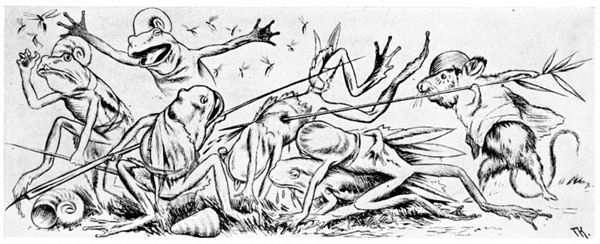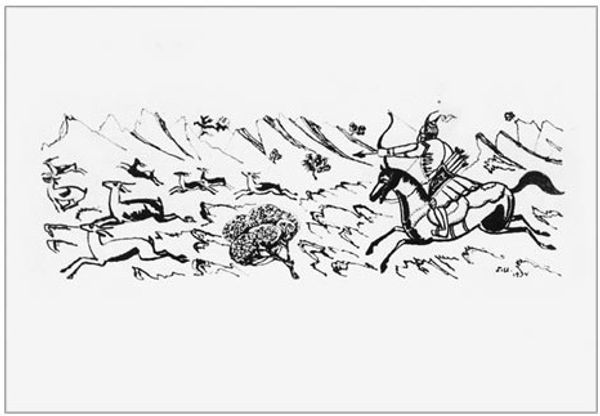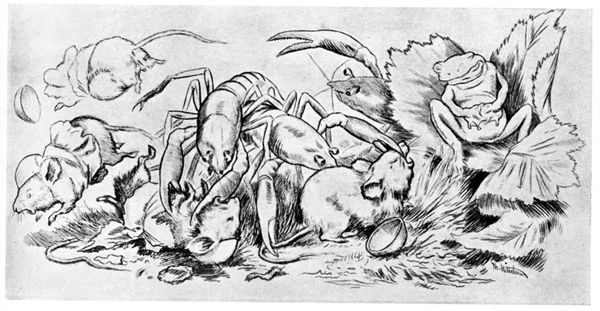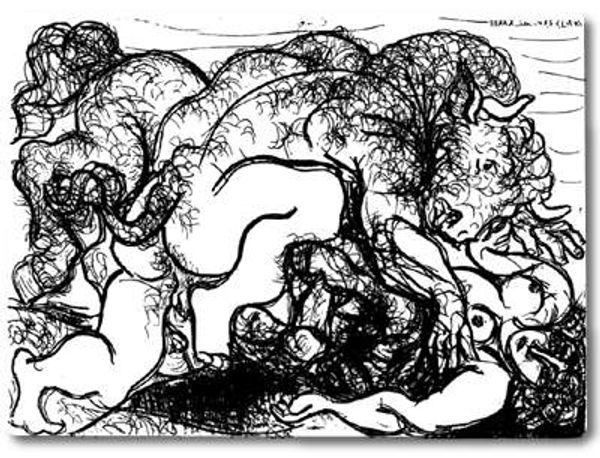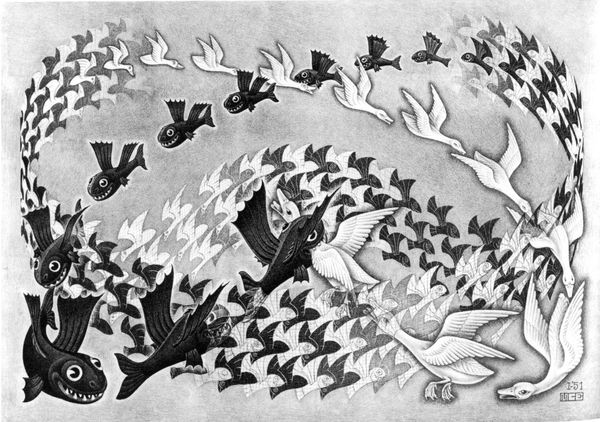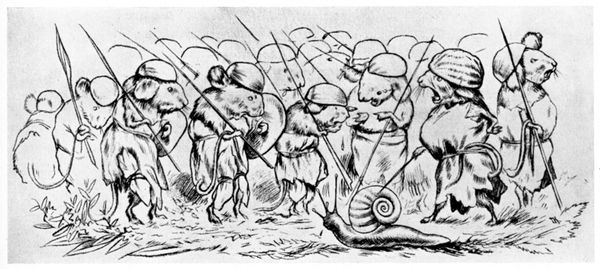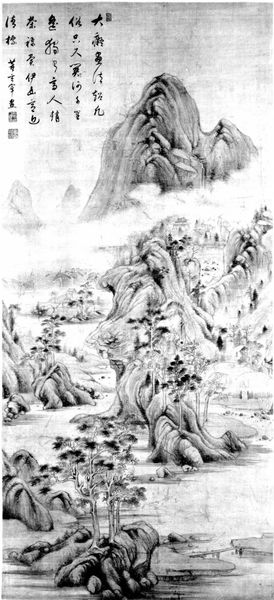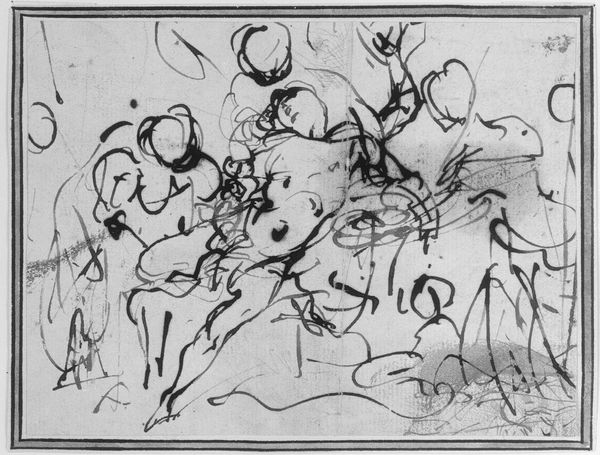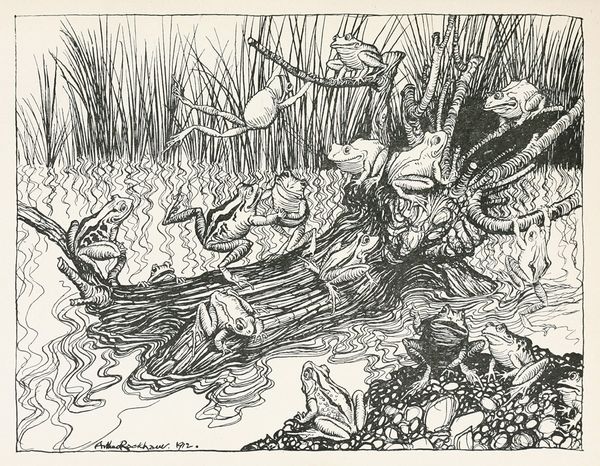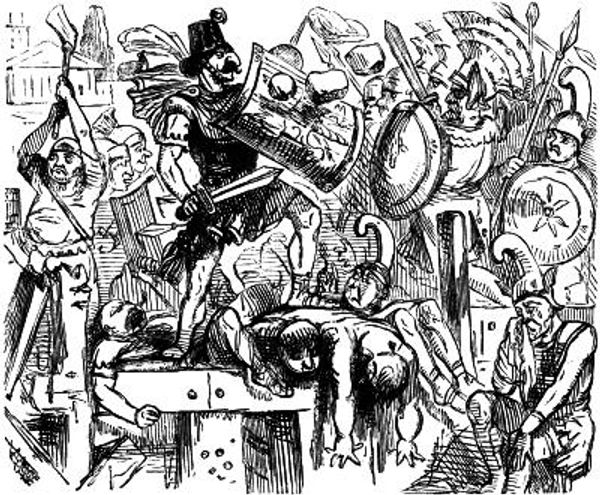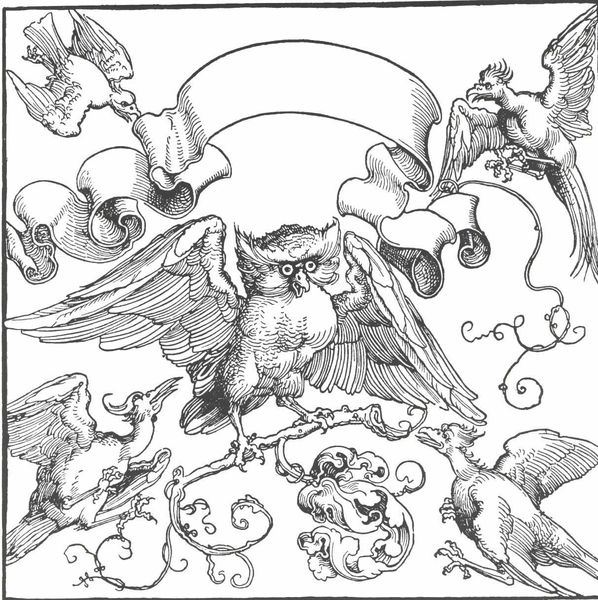
drawing, ink
#
drawing
#
narrative-art
#
pen illustration
#
landscape
#
figuration
#
ink line art
#
ink
#
pen-ink sketch
#
thin linework
#
pen work
#
symbolism
Copyright: Public domain
Editor: Here we have Theodor Kittelsen’s “The Battle Between the Frogs and the Mice 10,” an ink drawing from 1885. The frenetic energy is palpable! What’s your take on this scene of amphibious and rodent warfare? Curator: It’s tempting to see this as a simple animal fable, but I think Kittelsen is offering us a commentary on power, conflict, and social hierarchies. The story of the frog and mouse war, adapted from Aesop, speaks to the absurdity of conflict rooted in minor disagreements. Who benefits when those with less power squabble amongst themselves? Editor: That's interesting. I was just focused on the dynamism of the composition, the contrast between the light and shadow, but I hadn’t considered the power dynamics at play. Curator: Look closer at how Kittelsen renders the frogs, and the mice. Do you notice any details in their expressions or posture that hint at something deeper? Could this conflict reflect real-world tensions of the time, perhaps anxieties surrounding class, nationalism, or even emerging social movements? Editor: Now that you mention it, the frogs seem almost haughty, while the mice appear desperate, overwhelmed. Is it possible that this piece is not just about any war, but about the specific experience of the oppressed fighting for survival against a stronger oppressor? Curator: Precisely. By using animals, Kittelsen creates a safe distance to critique human behavior, much like Art Spiegelman does later in Maus, giving commentary on human condition and behaviour through an unexpected lens. This drawing encourages us to examine whose stories get told and whose get erased in the grand narratives of history. Editor: This has given me a lot to think about, particularly the ways in which historical context shapes artistic interpretation. It is way more than an innocent representation of battling animals. Curator: Exactly! That is why engaging with art history means understanding the societal factors that mould both the artist, the artwork and its audiences through the ages.
Comments
No comments
Be the first to comment and join the conversation on the ultimate creative platform.
